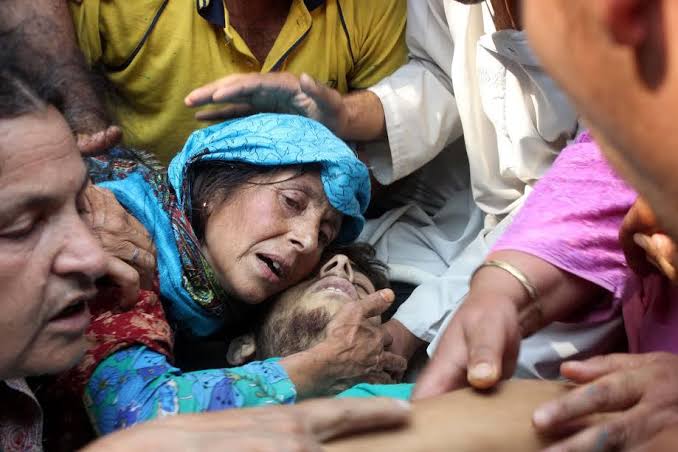Fatalities
246:Militants
89:Security forces
44:Policemen
106:Civilians
1,500:Stone-throwing incidents
SrCurled up in her mother’s lap, 18-month-old Hiba Nisar is trying hard to remove the bandage from her right eye. Crying, she wants her mother to set her free so that she can crawl through the corridor of her house.
Hiba became the youngest pellet victim when security forces fired at civilian protesters in Kashmir after killing six militants in Shopian district in November. Hiba was hit by a pellet in her right eye. Hiba’s retina is badly damaged. The doctors who operated upon her said chances of her regaining the eyesight are bleak.
“We are hopeful because the doctors have assured some positive results,” said Marshala Jan, Hiba’s mother.
This is just the tip of the iceberg of the violence that was witnessed in 2018. Sample this: Over 100 civilians, 246 militants and 89 security men have been claimed by violence this year — making it one of the bloodiest year in nearly a decade in Kashmir.
While the security forces may boast of having eliminated 246 militants this year — the highest since 2008 — the successes have come at a high cost. This year, the security forces have suffered the highest fatalities in a decade.
South Kashmir — the epicentre of the new-age militancy — continues to give sleepless nights to the political and security establishment. Most of the militants slain in 2018 were from this region. Majority of the recruitment in militant ranks came from it. Even the effect of election boycott call was mostly seen in south Kashmir. Despite killing of a large number of militants, over 160 ultras are active in the region.
The spurt in violence started after the killing of Burhan Wani in July 2016. And since then Kashmir has been on the boil with more locals joining the militant ranks.
This year the militant recruitment broke all previous records and over 180 youths are believed to have joined militancy giving an impetus to depleting numbers. Those who joined the ranks included PhD scholar-turned-militant Manan Wani and brother of a serving IPS officer. Security officials in Kashmir draw solace in the fact that they have been able to eliminate almost the entire leadership of militants this year.
“There are now only three known militant commanders left,” a senior police officer said. “A large number of militants have been killed which has depleted their ability to carry out major attacks.”
Of late, the operations are being carried out during night or pre-dawn hours to avoid clashes with civilians. Over 60 civilians have been killed either at gunfight sites or during law and order situations this year. The civilian killings at the encounter sites are limited to three districts of south Kashmir — Shopian, Pulwama and Kulgam.
Kashmir’s Inspector General of Police Swayam Prakash Pani said because of immense pressure militants targeted off-duty cops and also civilians. The year saw a sharp increase in targeted killing of policemen, Army men and civilians who the militants suspected to be informers.
Violence peaks
February 6: Two policemen killed by militants in a Srinagar hospital in which LeT commander Naveed Jatt escaped
March 5: Mastermind of the Sunjawan incident Mufti Waqas, a Pak national, killed in gunfight
April 1: 13 militants, three soldiers and four civilians killed
May 6: Five local militants, including Saddam Padder and a KU professor, killed in Shopian. Six civilians killed in clashes
May 16: Centre announces halting of anti-militancy ops
June 14: Rifleman Aurangzeb abducted and killed
June 14: Senior journalist Shujaat Bukhari, two policemen killed in Srinagar
June 17: Centre calls off unilateral ceasefire
August 22: Three off-duty policemen, including an inspector, killed on Eid
October 21: Seven civilians die in blast in Kulgam
November 28: Lashkar commander Naveed Jatt killed
December 15: An Army deserter, two Hizb militants, and an Army jawan killed

